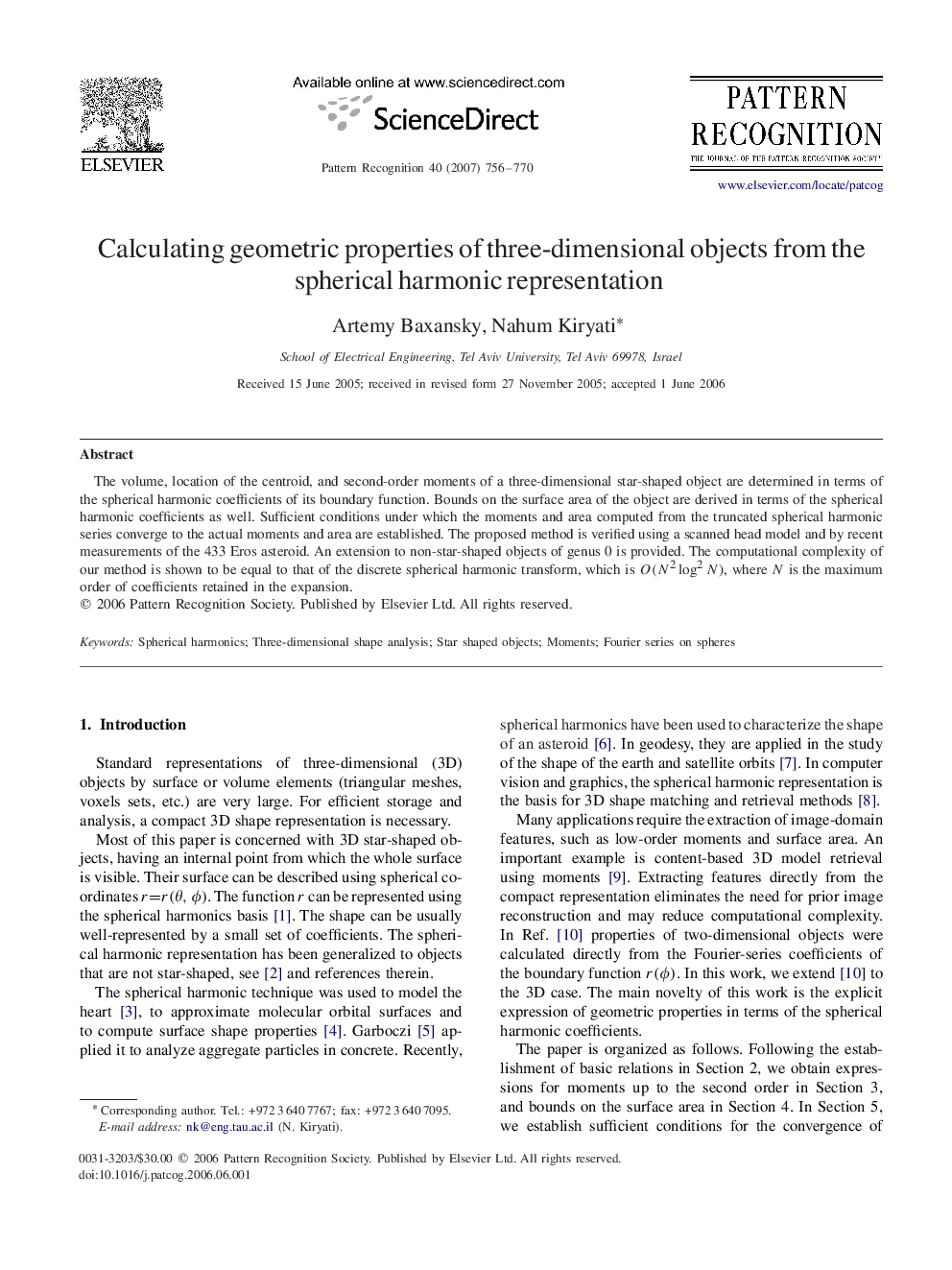| Article ID | Journal | Published Year | Pages | File Type |
|---|---|---|---|---|
| 531661 | Pattern Recognition | 2007 | 15 Pages |
The volume, location of the centroid, and second-order moments of a three-dimensional star-shaped object are determined in terms of the spherical harmonic coefficients of its boundary function. Bounds on the surface area of the object are derived in terms of the spherical harmonic coefficients as well. Sufficient conditions under which the moments and area computed from the truncated spherical harmonic series converge to the actual moments and area are established. The proposed method is verified using a scanned head model and by recent measurements of the 433 Eros asteroid. An extension to non-star-shaped objects of genus 0 is provided. The computational complexity of our method is shown to be equal to that of the discrete spherical harmonic transform, which is O(N2log2N), where NN is the maximum order of coefficients retained in the expansion.
